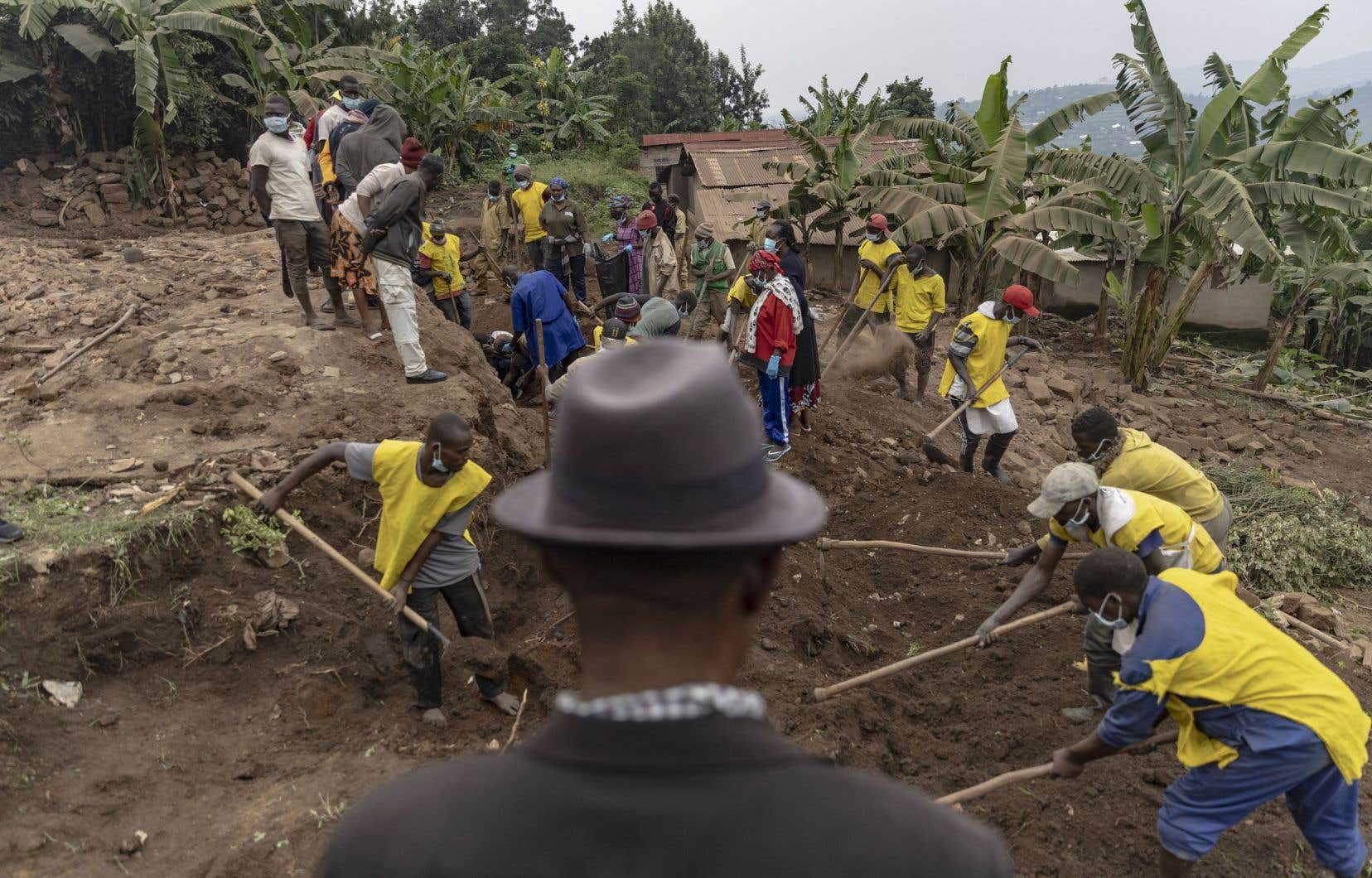At the beginning of the month, in the Rwandan village of Ngoma, it was oppressively hot while around a hundred volunteers dug up a mass grave dating from 1994. The symbol of a massacre whose 30th anniversary is being celebrated this year, although discovered recently under a house.
A crowd watched the volunteers working in the distance, from a hill of red earth. Many of them lost family during the Tutsi genocide in Rwanda. Finding the bodies of loved ones will allow some to soothe their hearts a little and accompany their loved ones with a little more dignity. The coming weeks will be used to identify the 210 remains found.
An investigation into the mass grave began in October, after someone gave information to authorities about the potential role of the family that owned the land in the genocide. Five of its members are currently under investigation for concealment of evidence and complicity in genocide, according to Agence France-Presse.
The discovery of this type of mass grave is sadly common in this country forever marked by transgenerational trauma. In April 2023, 1,100 murdered people were exhumed from a mass grave in the Rusizi district, located on land belonging to a Catholic parish. Four years earlier, around 30,000 bodies had been found in the east of the country. The same year, another 5,000 in Gatsibo district. The Ibuka association, which brings together genocide survivors, claims that the remains of more than 100,000 people have been discovered buried all over the country over the past five years.
How did Rwandans survive after this infamy? The United Nations estimates that between 800,000 and 1,000,000 people (mostly members of the Tutsi minority) were murdered in 1994, targeted by the extremist Hutu government then in place. A genocide took place in around 100 days, with the rest of the world inaction. A massacre of neighbors by neighbors in this small East African country. One of the most significant massacres in history, orchestrated by the government and its media branches such as Radio Télévision Libre des Milles Collines.
You should read Scholastique Mukasonga, a Rwandan author who lost her father, her mother and 37 members of her family in 1994. Now a social worker in Normandy, she won the Renaudot prize and the Ahmadou-Kourouma prize for her book Our Lady of the Nile. This tells of social relations as a prelude to 1994 in a high school for girls where only 10% of places were reserved for Tutsi students: “But what are we going to become? A Tutsi diploma is not like a Hutu diploma. It’s not a real diploma. The diploma is your identity card. If there are Tutsi on it, you will never find work, not even with white people. That’s the quota. »
Reconcile without forgetting
Rwandans were able to bounce back, even after such a collapse of the State, society and minds. They rebuilt themselves and rebuilt their country. Especially since in 1994, the survivors had to live with their executioners immediately after the events. They began a painful but necessary process of reconciliation. Exactly thirty years after this aberration in History, remembering is fundamental.
Reconciling does not imply forgetting. This is what the Rwandan people did: they rebuilt themselves as a unified political community, after a complicated legal process.
As there were too many culprits for the judges’ ability to legislate, the UN established the International Tribunal for Rwanda on November 8, 1994. An African system of courts gacaca was established in parallel as a restorative justice process. This Kinyarwanda term, meaning “sweet grass,” refers to open-air community courts. In order to speed up official procedures, the objective of these courts was to establish the truth about the facts and to use local cultures to reconcile Rwandans in order to strengthen national unity. Depending on the crimes and the timing of the confessions, those responsible received more or less severe penalties, from the death penalty to civil reparations.
As my Quebec and Rwandan friend Jeanne-Marie Rugira explained to me, in these times when hatred is unleashed without restraint, we must ask ourselves how to forgive, choose life and prioritize living together, even on a framework of background of such pain. She believes that if trauma can be passed down from generation to generation, so can healing.
Thirty years after the genocide of the Tutsis in Rwanda, it is ironic to see the international community behave in a similar way to what has been happening in Congo for 27 years, or to what is happening today in Gaza. If the world watched without flinching the Tutsis being massacred, it watches with comparable apathy the two million Palestinians confronted with a humanitarian situation that has become “shocking, unbearable and desperate”, in the words of the UN.
I will end by recounting the words of Beata Umubyeyi Mairesse, who escaped the Rwandan genocide and who this year published the collection Overturn misfortune published by Mémoire d’encrier: “Life changes if we don’t play it often / Go out on the boulevards, laugh, drink, kiss / Lips wear out if they don’t kiss // Live, in the present. »
